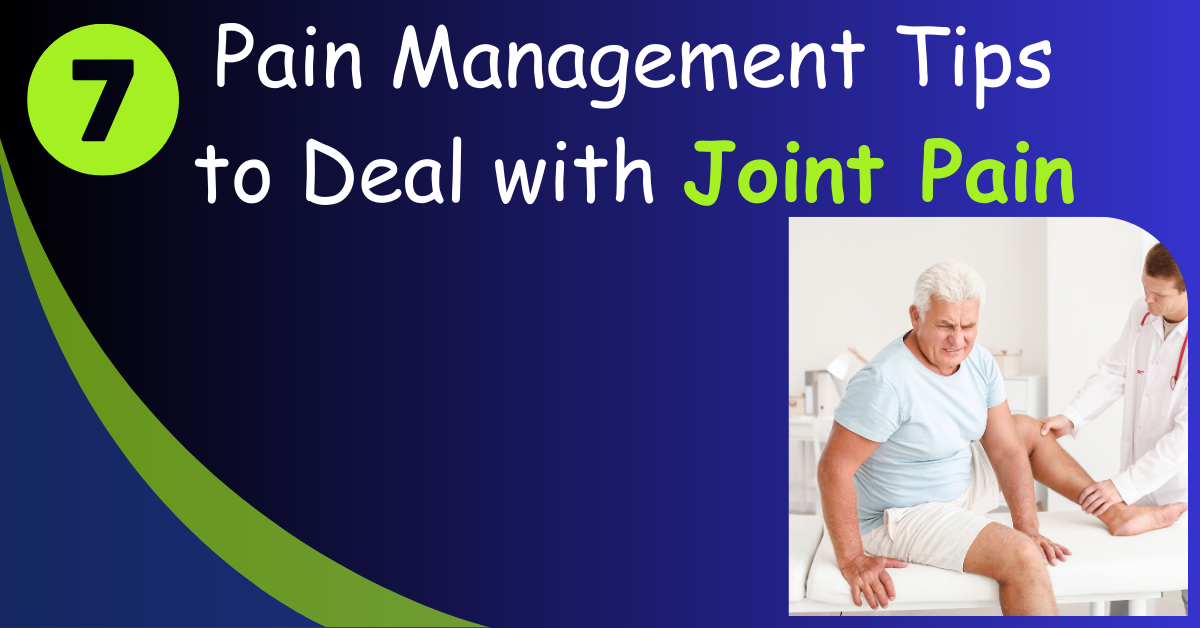
Joint pain can be debilitating and significantly impact a person's quality of life. Whether it's caused by arthritis, an injury, or other underlying conditions, finding an effective pain management strategy is crucial.
In this blog, we will discuss seven handy tips to help you alleviate joint pain and improve your overall well-being. But first, let us learn what a pain management strategy is.
What is Pain Management ?
Pain management is the process of relieving pain and improving the quality of life for those experiencing pain.
There are many different approaches to pain management, including medication, physical exercise, hot & cold therapies, joint relief cream, etc.
The goal of pain management is to find a treatment plan that is effective and allows the person to live a full and active life.
1. Root Cause of Joint Pain
Before we dive into the pain management tips, it's essential to understand the root cause of joint pain.
Joints are where two or more bones meet, and they are surrounded by a protective capsule and lubricated with synovial fluid. Conditions like arthritis, osteoarthritis, rheumatoid arthritis, gout, and injuries can lead to joint pain.
2. Never miss Exercise Regularly
Regular physical activity plays a vital role in managing joint pain. Low-impact exercises like swimming, walking, and cycling can help improve joint flexibility, reduce stiffness, and strengthen the surrounding muscles.
Make sure to consult with a healthcare professional or a physical therapist to determine the best exercise plan for your specific condition. This will help you deal with joint pain.
3. Healthy Weight Management
Maintaining a healthy weight is an essential part of your pain management strategy. Excess body weight puts extra stress on your joints, especially the knees, hips, and ankles.
By maintaining a healthy weight, you can significantly reduce the load on these joints, leading to decreased pain and discomfort.
Adopt a balanced diet rich in fruits, vegetables, whole grains, and lean proteins to help manage your weight effectively.
4. Follow Medication
Using anti-inflammatory medications without steroids could be effective in relieving joint pain. For quick relief, some people turn to pain relief sprays.
While these sprays can provide temporary relief, it's crucial not to rely on them too often. Overusing pain relief sprays can lead to adverse effects, such as skin irritation or dependency.
Use them sparingly and always follow the recommended dosage.
5. Apply Hot and Cold Therapy
Hot and cold compresses can work wonders in managing joint pain. Applying a warm compress to the affected area can help relax muscles and increase blood flow, while cold packs can reduce inflammation and numb the pain.
Alternate between hot and cold therapy to find out which one works best for you.
6. Incorporate Anti-Inflammatory Foods
Tip number six suggests including a balanced diet as what we eat affects our health significantly. Certain foods possess anti-inflammatory properties that can help reduce joint pain and swelling.
Include foods rich in omega-3 fatty acids, such as salmon and chia seeds to your diet. They can help decrease inflammation.
Turmeric, ginger, and green tea are also known for their anti-inflammatory benefits.
7. Get Adequate Rest
Rest is crucial for joint pain management, especially during flare-ups. Give your body time to heal and avoid putting unnecessary strain on the affected joints.
Adequate rest allows your body to speed up the healing process. Ensure you get quality sleep as it aids in the body's natural healing process and reduces overall pain levels.
Conclusion
Dealing with joint pain requires a multi-faceted approach that involves lifestyle changes and practical pain management strategies.
Staying active, maintaining a healthy weight, and using the right medication are essential aspects of managing joint pain.
Additionally, incorporating hot and cold therapy, anti-inflammatory foods, and allowing adequate rest can make a significant difference in alleviating discomfort caused by pain.

Add new comment